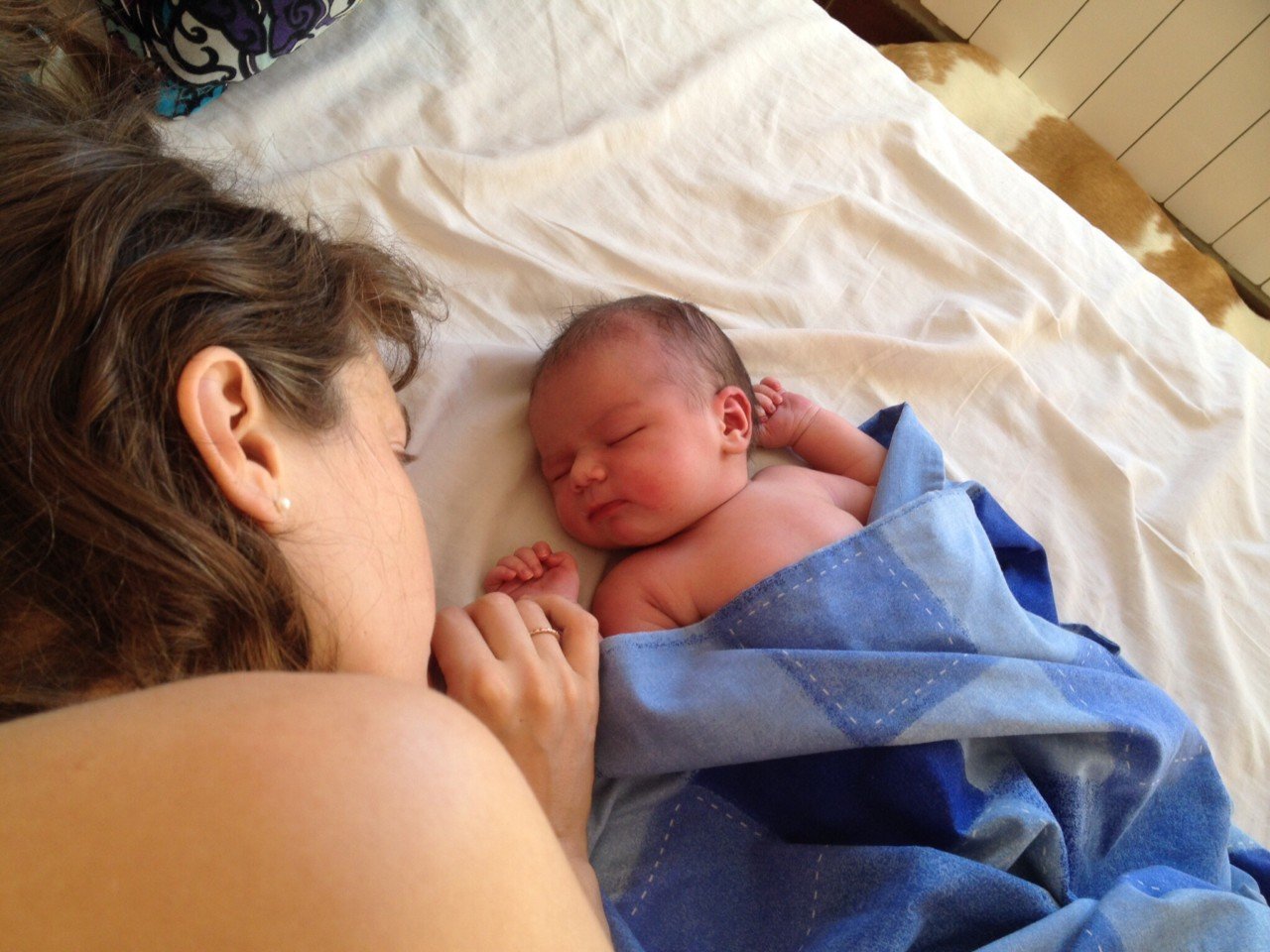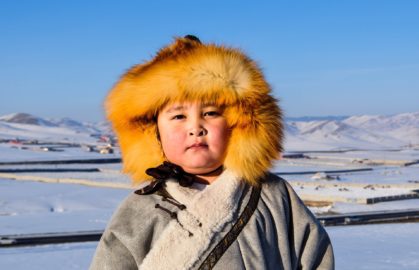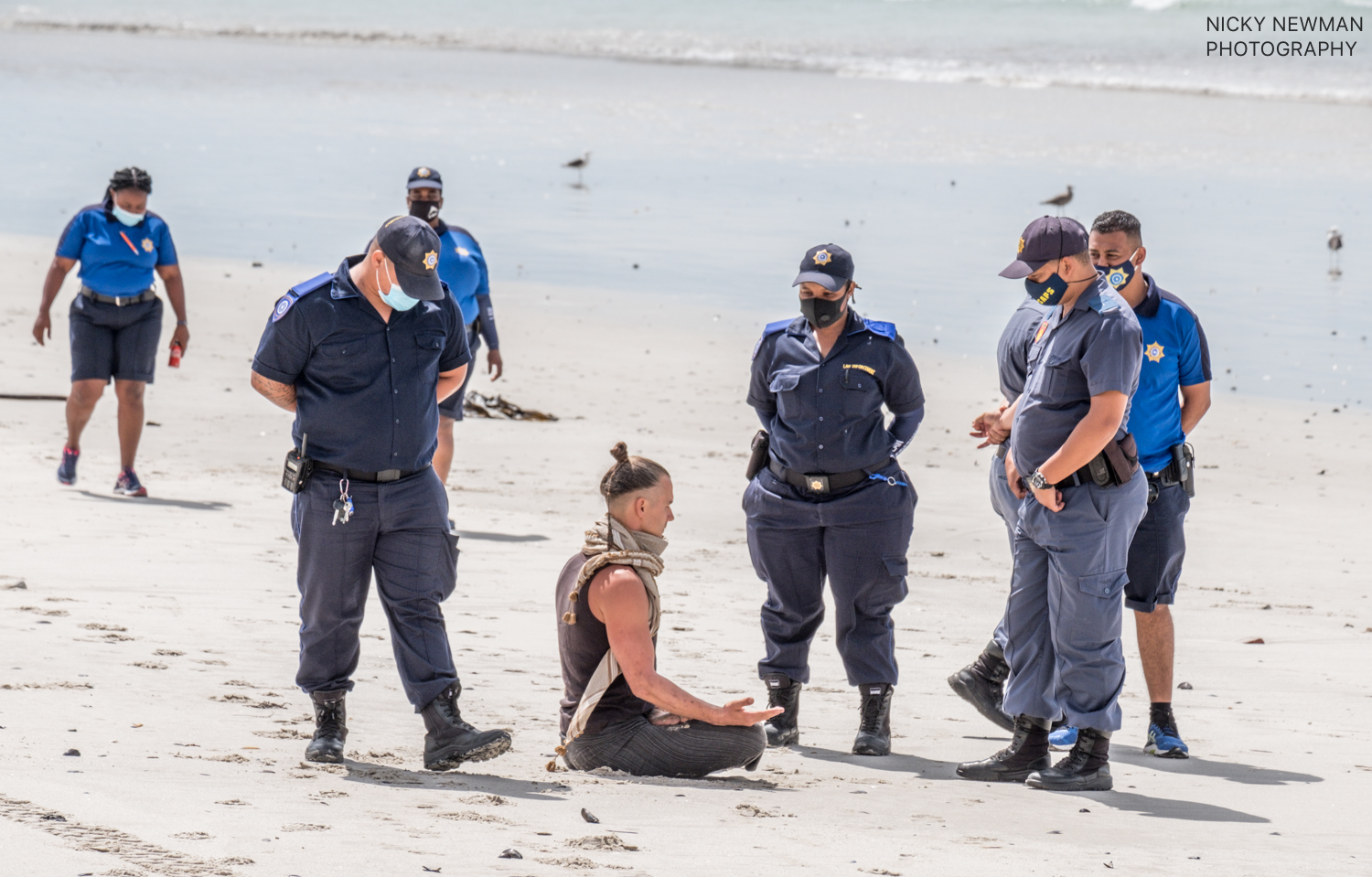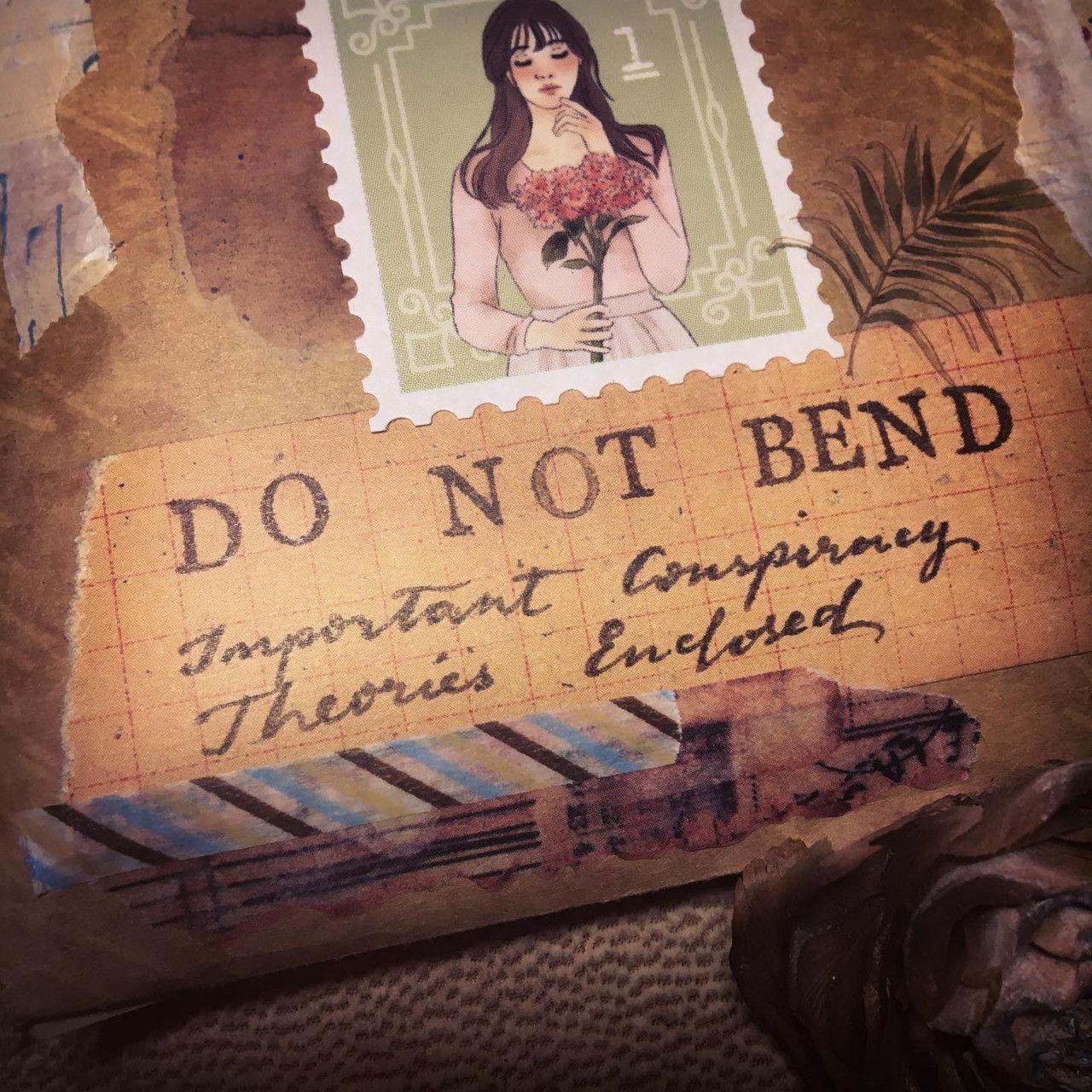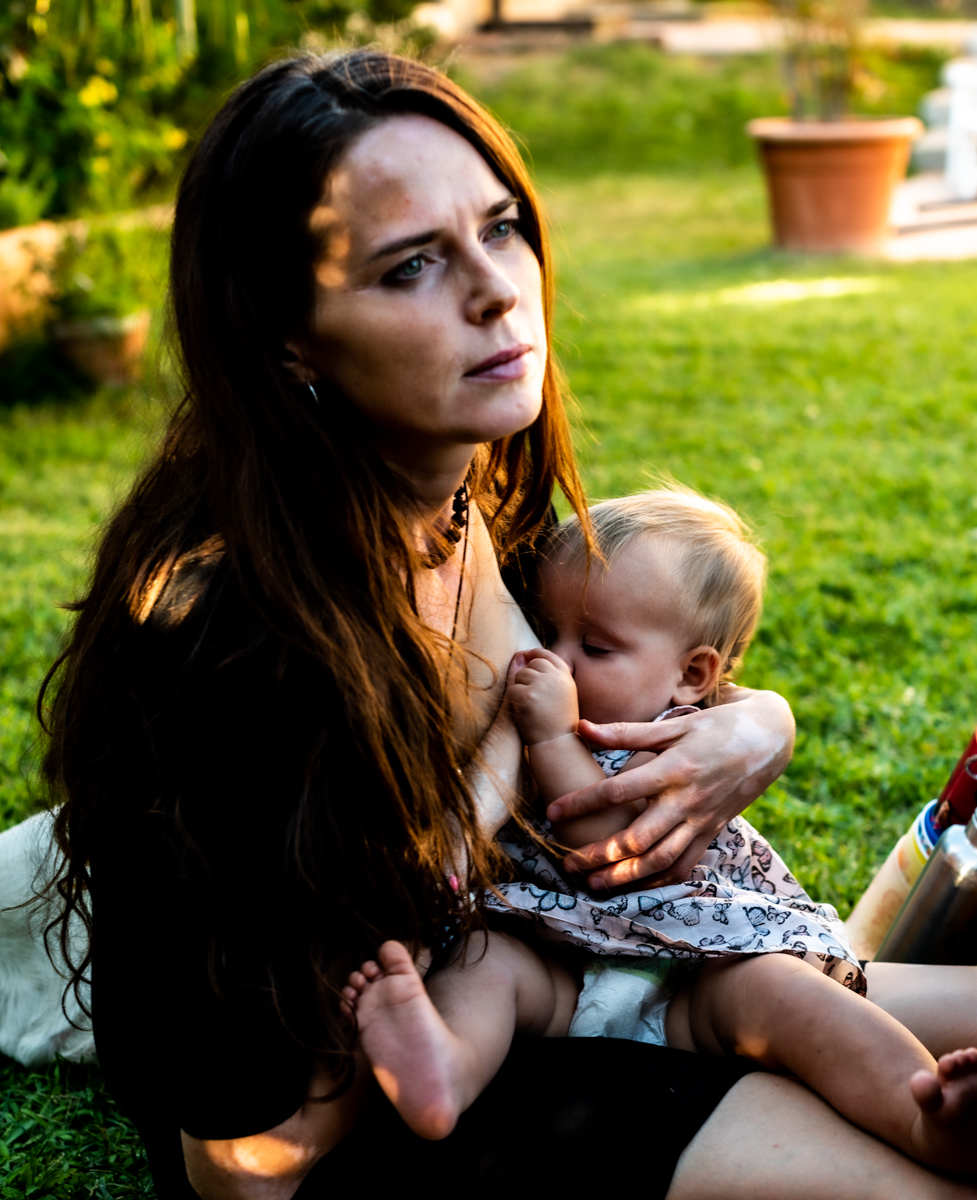
With André Stern at the Ecology of Childhood Lecture in Madrid, May 2017
If I had to choose one book that brought me the most enthusiasm in 2016, it would undoubtedly be Yo nunca fui a la escuela (in spanish: I never went to school) by the musician, composer, guitar maker, author and journalist André Stern. The book is a biography and an account of his childhood and unschooled life. His father, Arno Stern, is a known educationalist and researcher whose work primarily focused on the respect for spontaneous disposition of the human beings. And it was precisely this deep respect and trust that led André’s parents to the decision to not send their children to school. After months of excitedly gushing over the insights shared in this book, I finally had a chance to meet André a couple of weeks ago in his lecture entitled The Ecology of Childhood: an attitude of confidence and trust towards the authentic needs of girls and boys. During the whole lecture I kept scribbling notes, and I would like to share them with you here. These are not direct quotes, just ideas that I jotted down in English while the interpreter was busy translating his French lecture for the eager Spanish audience. I hope my notes capture the spirit of his views and will encourage anyone interested to look further into André’s work as well as the work of his father.
When I was 4 years old, I created a special phrase to introduce myself to anyone I met and that was, “Hello. I am André, I am a boy (an important detail when you are a boy with long hair), I am 4 years old, I don’t eat candy, and I don’t go to school”. As very little has changed since then, I can still use the same phrase to introduce myself, “Hello. I am André, I am a boy, I am 46 years old, I don’t eat candy, and I never went to school”. It is this last part – about me not attending school – that captures the attention of many, because it is seen as an exception in our society. My view, however, is that what I lived is not an exception at all because every child left in tranquility could live it. I am as banal as a mango seed – if you plant it, it will grow. And it is in the nature of every child to grow and learn, therefore, my experience is not an exception but a banality.
So what is the reason why it is important to talk about it? It is because the world has changed significantly in the last few years. For many decades, if not centuries, the world has been presented as being at war where only the fittest could survive, and all those who were not fit enough had to be careful not to get swallowed up by it. All evidence was pointing to that. It was used as a justification, as an alibi, for our own violence and competition. Recently, however, the scientific community has opened up the lid of the Pandora’s Box by beginning to investigate more modern “new age” ideas, and they are beginning to find more and more proof about how everything is, in fact, united. For example, it has been discovered that small trees that don’t get enough light because of their size are nourished by bigger trees through a complex root feeding system. These and similar new findings by the scientists require that we change our world view. New words are beginning to enter our world vision – synergy, symbiosis, solidarity, co-creation.
It is a new vision of the world because during centuries it was presented to be at war, and the child was seen as someone at complete disadvantage, someone who needs to grow in order to become his or her “version plus”, i.e. adult. However, we now have scientific proof that kids can learn everything and become whoever they wish, child’s mouth can pronounce any sound of any language out there. Therefore, their potential is huge. Science now shows that our genetic programmes can adapt to any situation and develop out of this potential. As the genetic programme does not know the exact situation that we as children will be born into, it has the potential to adapt to all possible scenarios. Born in a wild forest, we will need the capacity to distinguish all shades of green, whereas being born in Madrid will require other abilities. So we get to keep those capacities that are essential and the rest are dissolved, the potential is lost. But children are the guardians of this potential. There is no other way we can look at kids.
We all as adults carry inside us a wounded child. This wounding happens very early on in our lives. The way you are – nope – this does not work, you will need to change. It all starts very early, days after birth, with a very innocent question – “did the baby sleep well?”. The whole world asks that, but it is not such an innocent question. Because it carries a message – you are better if you sleep better, you need to change. And this continues all our lives, you would be better if you did xyz. This hurts us.
The eyes which look at us while we are kids define the way we see ourselves for the rest of our lives. Now, as adults, we continue to see ourselves the same way.
Little kids think they can learn anything, and it is only the measurement of others that impedes this. The eyes that looked at us when we were kids, are the same eyes with which we ourselves look at kids. Kids know that their capacity is 100% but the society sees them as a “zero”, and that causes suffering and another wound. Children internalize this message that they need to change and change their opinion about themselves, in order to think the same way as others view them. And this wounded child is inside each and every one of us. “I love you because you are the way you are” – this is where the reconciliation begins. We need to reconcile this in kids and the whole world will change. It might seem like a huge job but it is very easy. It starts inside. To start we need to know our equipment – we all came here with spontaneous dispositions. There are many, but this lecture will focus on four of them.
It is easy – let’s start with a question – what is the thing that all kids do when they are left in peace? Play. We all know that and see that everywhere in the world, no matter the circumstances. For kids this is even more important than the sensation of pain, they will keep playing after falling down or if they are sick. Second question – if we didn’t interrupt kids, what would they do? Keep playing. We also know that. So then the final question is – WHY do we interrupt playing kids? And it is because we lack trust in their spontaneous disposition to play. We lack respect. This comes from our own wounded inner child. So we interrupt and separate game from learning. Did you know that learning by itself does not exist? A concept of learning is what remains after play, it is what stays in our emotions. The two cannot be separated. And yet we’ve put them in two opposite ends. For a child it is very difficult when an adult says, “stop playing, you need to study”. It is like saying “breathe, but without inhaling air”. The child does not question the adult, but questions himself or herself first and thinks that he or she is the one that has a problem. This activates in their brain the same pain receptors as those active when one is in intense physical pain.
Play is the best tool – there is no better one. Write it down again and in big letters – THE BEST WAY TO LEARN IS PLAY. The problem is that we don’t take their playing seriously.
And to the child this is a problem, because children don’t just play, they are the play – the plane, the pilot, the air. If we interrupt play with “something more important” we are not just interrupting play, we interrupt the children themselves – and that is another wound.
Let’s talk about another spontaneous disposition and this is related to the work of neurobiologists. During the centuries when the world was presented to us as a world at war, everything was explained through genes – some people are dumb, some are intelligent, and that cannot change. Now we know from epigenetics that all can change, while before this was etched in marble. Dumb parents have dumb kids, while intelligent parents have intelligent children. This was the rule. We have recently discovered that in the adolescents’ brains the zone that is stimulated by thumbs is much bigger now than it was 15 years ago. And that is because of the use of phones and sending SMS messages. So a brain can actually change because of a muscle (!!!), and it is not all genetically programmed. A group of scientists decided to create a computer programme that would train the brain through muscles. The spectacular result was zero. But if it worked so well with SMS messages, why didn’t work with Maths? The final discovery and the missing piece was that we develop and learn fast when we do it with enthusiasm. We all know that it gives us wings and lets us learn anything that we want to learn. But from neurobiology we now know that when we are enthusiastic, a cocktail of neurochemicals is generated for the neurotransmitters which enables neuroplasticity – so it’s like a fertilizer for the brain. It’s like a call to trust that we come to the world to learn through play and we have a portable brain fertilizer for it.
And we see that inside the brains of small kids this explosion of enthusiasm happens on average every 2-3 minutes. They don’t know hierarchies, professions or what matters, so they get equally excited about knitting or doing the Maths, the kitchen floor or astronauts. Their brains are constantly working with this fertilizer of enthusiasm. Do you want to guess how often this explosion of enthusiasm happens in the brains of adults? On average, it’s 2-3 times per year! And if you are someone who gets enthusiastic more often, you are probably robbing it off from some other adult :). Enthusiasm is actually the only resource in the world that is unlimited. In each child there is a genius waiting for enthusiasm. In each one of us there is a genius waiting for enthusiasm. But we need to change things, to undo the hierarchies, because if you cannot connect with your own enthusiasm, you cannot connect with the genius inside. And we always treat kids the way we treat ourselves.
(André approaches a lady sitting in the front row and stands in front of her quite closely) This is the posture that the kids spend their days in, with the necks bent upwards. It is not comfortable, but many kids have adults standing above them and too close to them. (André stoops down) This is how the kids should be approached – at their level. It’s important to note that our posture alone isn’t everything, an adult might be on their knees but if they continue with the hierarchy in their hearts, this changes nothing. We need to get rid of the hegemony with kids because it’s the same hegemony we have with ourselves.
One of my greatest teachers in life was a master who taught me how to work with wood when I was still very young. He used to say, “I can show you everything but I cannot teach you anything”. He just shared the pieces of wood without saying how expensive they were, or talking to me in some childish way. Why should kids accept what we adults would not accept? It has nothing to do with us being all cute with them. Kids want to belong, to be like us, and yet we talk to them in a childlike silly manner. They know that we don’t speak that way with others. When we talk to them like that, the message they are getting is that they still do not belong to the group of people among which we speak normally.
It is time to change the attitude from “what can we teach children?” to “what can we learn from them?”. In which areas are they masters? For example, kids do not exclude or differentiate by age, race, sex, species – they approach all with tolerance and open heart. There is no need to teach kids tolerance because adults don’t know what it is. A more peaceful world is easy to achieve, we just need to stop distancing ourselves from our spontaneous dispositions. This openness and tolerance is the third natural disposition.
The fourth one is that from a very young age kids want to go out into the world. If a child is not happy, we say he or she is having a tantrum, but if you only move with them to a new space, you’ll see them immediately start absorbing it all with amazement. A child knows that we are made for this diversity. You and I, and all of us – we can create so much more. All of us together – one of us can run fast and another one can tell stories. A child knows that if they need to reach something high above, they will need an adult, but that to reach something from underneath the sofa, he or she is an expert and can do it themselves. The worst thing that can happen to a child is to be enclosed at home with the parents, because the window through which they can see the world becomes very small. Everything is outside. And we also share our fears with our kids. For example, I find it terrifying that my son, Antonin, loves climbing trees.
We are not scared of new things, we are scared of that which can hurt us, of things we cannot control.
We are made for new faces and places, and “yes, but…” is the typical response to this natural disposition. When we have a vision or a project it’s the “yes, but…” which destroys our dreams. It’s what we look for and, therefore, it’s what we find. (André instructs the audience to study carefully their surroundings by looking for everything that is red, to really spend a couple of minutes memorizing those items, and says he would quiz everyone about it. A couple of minutes later he asks everyone to close their eyes and tell him what blue things everyone had seen. Everyone laughs.) This “yes, but…” is the same – we only find what we look for.
When Antonin was 3 years old, he got fascinated with combine harvesters. He spent the whole winter watching videos about them and “harvesting” around all flat surfaces of the house. Next summer, the whole family were driving when they saw a combine harvester in the fields. They got out of the car so that Antonin could finally have a look at it. A little bit later the combine harvester approached them, and the driver invited them in. For two hours! The driver was so moved by the boy’s enthusiasm, he wanted to show everything, all the details, buttons and commands. What an amazing opportunity it was for Antonin to learn all about it! The driver later explained why he stopped for the boy, “For days and days I drive around and nobody had seen me the way this little human did. Not only did he look at me, he really saw me.” It was a reconciliation between himself and his own wounded child – I love you because you are the way you are, because you do what you do. At the end of the tour, the driver gave Antonin an ear of wheat explaining to him that it was the future bread – it was as if he himself finally understood the sacredness of what he was doing. The child’s gaze at him changed the way he saw himself. The child goes out into the world and changes it and changes him/herself and the world of the parents. A child who leaves to go into the world changes it through small banal stories.
So the invitation is to come to the side of the mirror where we trust kids. And the hope is that we can stay here longer, because every minute that we spend here is a blessing for the child. We often want them to be happy so much that we forget how to live as happy adults. We see through our kids our past, but in us they see their future. It is an invitation to live through their eyes. We live in the eyes of our children. There won’t be peace on Earth until we begin to trust childhood.
Reflections from the Q&A session
– On the role of adults in accompanying the children’s play
There is no standard because there is no methodology. An adult simply needs to live with kids, but we don’t, instead we spend our time teaching them. Kids need to play. They don’t need to see us change things into a game but to simply live it this way. It is only a recommendation, and the main recommendation is that you don’t listen to any recommendations. Any time you hear that someone has the answer that fits the whole world, and especially, if they want to coach and have something to sell – run away from it.
– On video games and virtual reality
This is a very modern question. The problem is presented as – the virtual world is dangerous and kids who play video games stay absorbed in them. So the solution is to keep them away from it for as long as possible. But we are mistaken when we make an incorrect starting assumption. For example, we make an observation that kids will always approach other kids. It is incorrect, kids approach those who play, it is that in our world kids are the only ones who play. So no, it’s not a certainty that kids will always approach other kids, they will go to kids that are playing. Another example could be a scientist experimenting with a flea. He pulls its leg off and says, “Flea, jump!”. The flea jumps. He does it again and again until it is left with no legs. He says, “Flea, jump!” and it doesn’t. So he writes down a conclusion of his experiment: “When the flea has no legs, it becomes deaf”.
In the same way it is a mistake to say that the virtual world is dangerous. The world is full of iPads, iPhones, etc. We could say, “I have a phone and you don’t because you are a child“. But if I said, “You cannot have this iPad because you are a woman“, it would be discrimination. We say, “Children need limits”, but if I said, “Women need limits”, it’s discrimination because this is the way it used to be for women. It’s only a change of one word, but it is the same discrimination. Many parents often use a phrase “When you are older”, but this only makes a child want to be someone else other than who they are, in other words, to become someone who can.
The world of children is divided into two worlds: school and home. Current school system – and this is not a criticism of it but just a highlight of its general attitude – while it exists with its paradigm, it is impossible for a child to become who he or she wants to become. And what every child wants to become is a hero/heroine. At school, if you are a hero to your teacher, you are likely to feel excluded from other students. While this attitude exists, it is impossible to be heroes at school. At home, it is also not possible to be one because the same attitudes exist in homes as in the rest of the society – “nobody in our family had such bad grades as you”, etc.
So if a child cannot be a hero at home or at school, the virtual world becomes an easy place where that can happen. There is no discrimination by gender, age, skin colour – none of this makes any difference because you will be loved, admired and talked to as an equal. So what is so dangerous about the virtual world in comparison to the other two worlds into which we send our kids? If we decide to prohibit the virtual world, it will not solve the problem. We need to change the analogue world, to make it as attractive as the virtual one. This is where the work is. There are recent studies that show that our kids become like that which surrounds them. So if they observe people who are empathic and successful, the kids will become empathic. If they see successful people acting with violence they will become that. We are at war with kids and show daily violence towards them. The violence in kids is simply a mirror of our own violence.
– On supporting a child who has a major fear of changes
We all want a method that works. The problem with enthusiasm is that it is impossible to shake a child into becoming enthusiastic. However, enthusiasm has one quality – it is contagious. Often the only thing that we can do is to live in the eyes of our children a life full of our own enthusiasm. The problem is that we ourselves are scared of new things, so then it is difficult to teach that to a child. If there was only one answer to this, you should be really suspicious.
– On parents dealing with their own “backpack of pain” from their childhoods
I talk a lot about wounded child – we each have one inside. Even if we feel it might be too late for us, it is not too late for our kids. Kids who grow up hearing “I love you because you are the way you are” have this anchor for the rest of their lives.
– On the experience of André’s life and what is needed for it to be replicated
Everything that happened to me is something that every child can live. But this is not to say that all parents can. The child is “made for” going out into the world, because without that he or she will simply live within the limits of the parents. Children need to benefit from the richness of the world. Regarding my parents – it was not like they woke up one day and realised they had perfect conditions to do what they did – sociocultural aspects, trust in children, talented kids – and decided “let’s respect the natural rhythms of our kids”. It was a simple conviction of trust towards the kids. They had nothing against anything. They were simply for respect of the natural rhythms and rituals of childhood. First, there was the decision. Day after day, euro by euro we make these decisions possible. There are no other requirements.
The solution that is good for you is good for your children and your environment. The problem of all the “methods” is that they always come from adults, from their imagination and experiences – all education comes from adults. My proposal is always so simple.
– On taking a child on a 3-year long journey around the world and attachment parenting
Our kids live with us, so if we travel they will be travelling with us. Life itself is a journey, not just in a geographical sense, and perhaps there is no direct answer. We are models for our kids, and they become what we are – “my father is so authentic – I want to be as authentic as him”. The worst you can do is live a life of sacrifice – the “I didn’t have a life so that you could have a better life” attitude. If you show them a life of sacrifice, they will do that for their kids.
If we want our kids to be happy adults, we need to live like happy adults.
During the first few months of our lives we live an experience of attachment, the most intense that we will ever live. We live an experience of growing in this, and attachment turns out to be the main factor for autonomy. It is the opposite of what we are being taught – to push out, separate, let them cry, so that autonomy would get “pushed onto” them. We are now learning the opposite, and it is that if you want the most autonomous kids, give them the most attachment. In tribal communities babies don’t leave the arms of their parents or of other community members until they are able to walk.
Life is full of frustration so there is this idea that kids need to learn to deal with it, in order for them to be prepared. But creating frustration for kids only saturates their immune system, and all of this “training” has the opposite effect. Frustrations should not be the majority of their experiences. If a child is exposed to mostly experiences of satisfaction, frustration will be a minor experience and he or she will be able to deal with it easier.
Attachment is key – for it says “I love you because you are who you are”. It is an anchor for a traveling boat. It is not a method but rather an attitude. If you give them this, the rest is just organizational details.
– On giving structure to children’s lives and balancing freedom with chaos
Don’t mix up freedom with chaos. The idea of absence of structure, the laissez faire, “let them do it”, are all adult concepts that became popular as applied to adult and children’s lives back in 1970s and it was a reaction to Nazism. Children are looking for rituals which is what gives them structure and security. Like when we go to a foreign country and feel more at home when we understand the local rituals. They are personal rituals – when to take their jacket off, to get up at 6am to play the guitar; family rituals; societal rituals – Sundays are different, cars stop at red colour.
When I was small, it was not a problem for me to stop my game at the end of the day. I had played the whole day and I knew that the next day I could take up the game where I had left it. I didn’t have to do anything, I didn’t have to worry about anything. All my legos were left how I wanted. What a trust! To stop the game is not a problem – the problem is when it cannot be resumed. My parents never decided that 8.30pm was the time to go to sleep, it just crystalized itself and became part of the ritual.
It is our fears that define and limit the world of our kids. When my father traveled to visit the tribal communities, he used to see 3-year olds playing with machetes 1cm away from the fingers of their fathers, or mothers grinding grains while their little kids had their fingers next to the grinders. I couldn’t do it. But they didn’t have this fear. It is, therefore, really important that kids go out into the world.
There will be no peace in this world while there is no peace in childhood. I wish you lots of trust and enthusiasm!
Tags: alternative education André Stern attachment parenting conscious parenting unschooling
